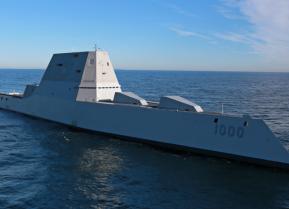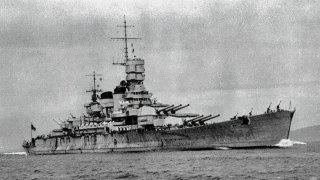Littorio-Class: Italy Built a Class of Battleships Like No Other
Although the Littorio-Class vessels were constructed to pack a punch, their ultimate role during the Second World War was limited. In 1940, the British Royal Navy struck the Littorio during its raid on Taranto. While the battleship suffered serious damage, she later rejoined the fleet in 1941.
Italy’s Littorio -Class Battleship - The Ultimate Guide: During the Second World War, Italy constructed a formidable battleship class loaded with firepower. Also recognized as the Vittorio Vento class, these boats would become the most modern vessels sailed by Italy during the war. Four ships made up this class, the Littorio, Vittorio Veneto, Roma and Imperio. However, only the first three ships of the class were ever completed.
While Nazi Germany’s Bismarck and Tirpitz and Imperial Japan’s Yamato and Musahsi battleships are recognized as some of the most famous battleships of the war, Italy’s counterparts should not be discounted.
The history of the Littorio-Class ships:
In the early 1920’s, the signing of the Washington Naval Treaty penned by the major Allies of WWI enabled the signers to build ships with increased tonnage. Both Italy and France were given an additional 70,000 long tons of total capital ship tonnage.
This new leverage led to the construction of the Littorio ships. The Ship Projects Committee was tasked with preparing the construction plans for two large battleships equipped with modern capabilities. The Littorio was officially launched in 1937, followed by the Vittorio Veneto in 1940, the Roma in 1942 and the Impero in 1939. The first two ships in the class were slightly shorter in length than the Roma and Impero.
The vessels in this class also possessed various displacements. Roma’s displacement was slightly greater than her sister-ships. Since Impero was never fully completed, her final displacement remains a mystery.
In terms of armaments, the Littorio ships were quite lethal. Each vessel was incorporated with three sets of three 371mm main guns and four sets of three 152mm guns in addition to a dozen 90mm anti-aircraft guns. The primary belt armor of this class was designed to resist armor-piercing shells down to 16,000 meters.
The Littorio-Class’ performance in World War II:
Although the Littorio-Class vessels were constructed to pack a punch, their ultimate role during the Second World War was limited. In 1940, the British Royal Navy struck the Littorio during its raid on Taranto. While the battleship suffered serious damage, she later rejoined the fleet in 1941.

The Vittorio Veneto suffered a similar fate to the lead ship in the class. In 1941 and 1943, she was damaged in a series of Allied air attacks in La Spezia.
The war perhaps took the greatest toll on the Roma battleship. When Italy withdrew from the Axis with Mussolini’s downfall, Nazi Germany grew concerned with how the Allies could use the formidable battleship.

One day after the armistice, Germany’s Fritz Z radio-controlled bombs were deployed to decimate the ship. Within a matter of minutes, the Roma capsized and broke in two pieces. Sadly, less than 600 sailors out of the nearly 1,900 onboard the vessel survived the attack.
For more than six decades, the ship’s resting place was never discovered. This changed in 2012, when the wreck of the battleship was found roughly 19 miles off the northern coast of Sardinia.
About the Author: Maya Carlin
Maya Carlin, National Security Writer with The National Interest, is an analyst with the Center for Security Policy and a former Anna Sobol Levy Fellow at IDC Herzliya in Israel. She has by-lines in many publications, including The National Interest, Jerusalem Post, and Times of Israel. You can follow her on Twitter: @MayaCarlin.


